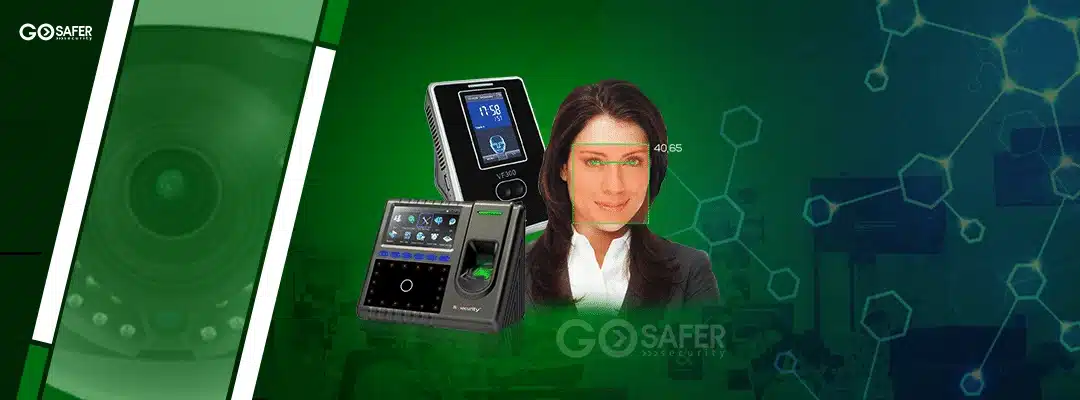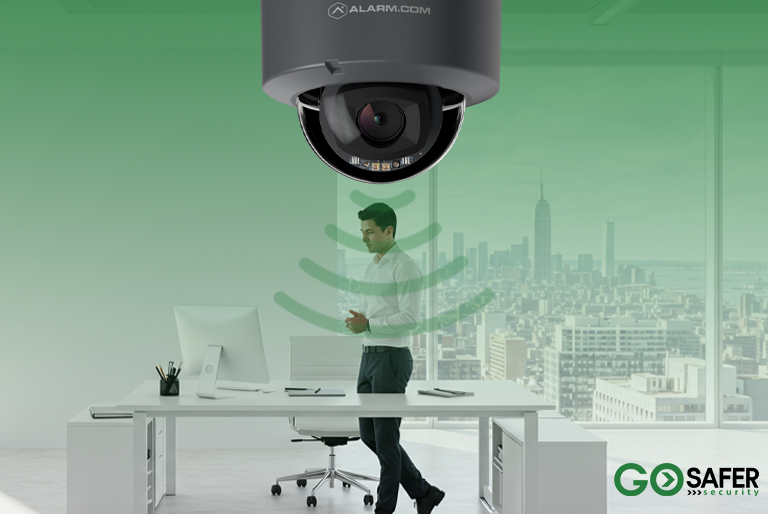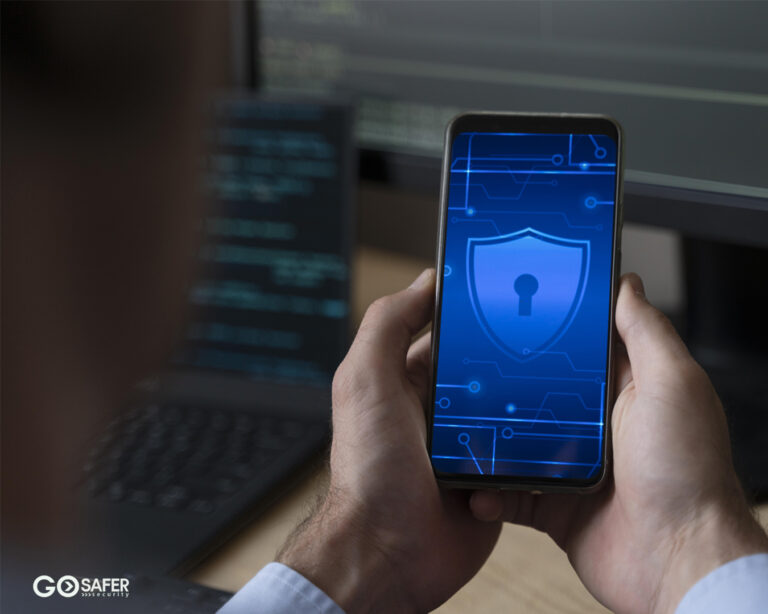Biometrics and face recognition systems are used in a variety of fields for security and surveillance purposes. While these systems aren’t common in most households, they’re starting to become much more common in the business industries. While these systems can be used to provide security for homes and businesses, they can also be used in ATMs and in physical access control systems. (the same function as a key card and fob home security systems)
In this blog post, you will get to know what is a biometric and face recognition system and we’ll explore the basics of this technology, including how they work, what they’re used for, and their benefits. Keep reading to learn more!
Table of Contents
ToggleBiometric and Face Recognition System: An Overview
Biometric and Face Recognition systems are becoming increasingly popular in both the public and private sectors. A biometric system is a technology that uses an individual’s physical or behavioral characteristics to identify or verify a person’s identity. Commonly used biometric traits include fingerprints, retinal scans, facial recognition, voice recognition, and signature recognition. Face recognition is a type of biometric system that uses an individual’s facial features to verify their identity.
Face recognition systems work by capturing an image of a person’s face and comparing it to a database of known faces. The system then looks for unique facial features such as lip shape, eye color, and nose size to match the person to the database. Once the person has been identified, the system can then provide access to secure areas, access to restricted information, or other privileges associated with the person’s identity.
Face recognition is becoming more popular in many different applications. It is used in airports, business offices, schools, and even in ATMs. In airports, face recognition technology is used to quickly and accurately identify travelers, making the process of checking in and boarding much faster. Business offices use the technology to securely identify employees and provide them with access to restricted areas. Schools can use technology to monitor attendance and identify visitors. And in ATMs, face recognition is used to verify the identity of customers and prevent fraud.
Face recognition is a powerful technology that is becoming more prevalent in both the public and private sectors. It is a secure and efficient way to identify people and grant them access to secure areas or information. As the technology continues to improve and become more widely used, it is likely that it will become a standard feature in many different applications.
How Does a Face Recognition System Work?
A face recognition system is a biometric technology that uses sophisticated facial recognition algorithms to identify and verify an individual. This technology is based on the principle that every face is unique and can be used to accurately identify and authenticate an individual. Facial recognition systems use facial recognition software and facial recognition technology to scan face images and compare them to existing databases of known faces. The software then extracts specific facial features from the image, such as the eyes, nose, and mouth, and creates a unique facial signature. This signature is then compared to the signature in the existing database of known faces to determine if the person in the image is a match.
Facial recognition systems use advanced facial recognition algorithms to identify and verify people. These algorithms can be used to detect and identify a person’s face in real time, as well as to recognize a face from a still image. The algorithms can also be used to measure facial features such as the size, shape, and position of the eyes, nose, and mouth. The algorithms also allow facial recognition systems to recognize faces from different angles and in different lighting conditions. Additionally, the algorithms can be used to compare multiple faces and identify similarities between them.
Facial recognition technology is rapidly becoming more sophisticated and reliable and is being used in a variety of different applications. It is now being used in security systems, passport verification, and even in the retail and banking industries. As facial recognition technology continues to improve, it will become even more widely used and will enable more efficient and secure authentication processes.
Types of Face Recognition Systems Available
Face recognition technology has become increasingly popular in recent years, with many businesses and organizations utilizing it in order to improve security, reduce costs, and increase efficiency. There are a number of different types of face recognition systems available, each with its own advantages and disadvantages.
The most common type of face recognition system is facial recognition software, which uses a digital camera or another imaging device to capture and analyze facial features. This type of system is relatively inexpensive and easy to implement and is often used in airports and other public locations. However, the accuracy of facial recognition software can be affected by lighting and other environmental factors, making it less reliable than other types of systems.
Another type of face recognition system is biometric authentication, which uses a combination of physical characteristics, such as fingerprints, retinal scans, or voice recognition, to verify identity. Biometric authentication systems are typically more expensive than facial recognition software, but they are also much more reliable and secure.
Finally, there are 3D facial recognition systems, which use a 3D camera to capture a person’s facial features. These systems are typically more accurate than 2D facial recognition systems and are often used in high-security applications. However, 3D facial recognition systems are also much more expensive than other types of systems, making them less practical for many businesses.
Overall, there are a variety of different types of face recognition systems available, each with its own pros and cons. Businesses and organizations should carefully consider their needs and budget before deciding which type of system is best for them.
The Benefits of Using Facial Recognition Solutions for Access Control and Biometric Data
Facial recognition solutions are becoming increasingly popular in the world of access control and biometric data. These solutions use sophisticated facial recognition algorithms to identify and verify individuals through their facial features. They are also equipped with sophisticated facial recognition software that can detect and capture facial images quickly and accurately. This makes them ideal for use in access control systems, such as ticketing, identity verification, and attendance tracking. (see also how biometric and time attendance tracking work)
When a person’s face is scanned, the facial recognition system uses a series of algorithms to compare the image to a database of known faces. This comparison allows the system to identify the person with a high degree of accuracy. In addition, facial recognition systems can also be used to detect changes in facial expressions, such as those associated with emotions or stress. This can be useful for security purposes, as it can alert personnel to suspicious activities or potential threats.
Additionally, facial recognition offers other benefits. For example, it can help to reduce time spent logging into a system, as users no longer have to remember and type in passwords. It can also be used to improve customer service, as it can be used to recognize customers quickly and accurately, allowing businesses to provide better services. Finally, it can help to protect people’s privacy, as biometrics can be used to confirm an individual’s identity without having to reveal any sensitive information.
How Are Facial Images Used for Biometric Identification?
Facial images are one of the most widely used biometric identification methods. Biometric identification is a system of using physical characteristics, usually of the face, to verify a person’s identity. Face recognition systems utilize facial recognition algorithms to match a facial image to a database of existing images. Facial recognition software is then used to analyze the facial image and generate a unique identifier. This identifier is then used to compare the facial image to existing records in the database, to determine whether the person is an authorized user.
Facial recognition technology has been used in a variety of applications such as security systems, law enforcement, and access control systems. Facial recognition systems use a variety of facial recognition algorithms to analyze the facial image and generate a unique identifier. These algorithms typically look at the shape, size, and features of the face to determine a match. In addition, facial recognition software can also analyze aspects such as skin color, texture, eye color, and other facial features, to improve the accuracy of the matching process.
Face recognition technology has become increasingly popular in recent years as it can be used for a number of different purposes. For example, face recognition systems can be used for access control, authorization, and identification. In addition, facial recognition technology can also be used for facial recognition software development, facial recognition software integration, and facial recognition system deployment. With the increasing popularity of facial recognition technology and the advancements in facial recognition algorithms, facial recognition systems are becoming increasingly accurate and reliable.
The Role of Artificial Intelligence and Machine Learning in Facial Recognition
The role of Artificial Intelligence (AI) and Machine Learning (ML) in facial recognition is very important. Facial recognition is a biometric technology that uses facial features to identify individuals. It is used for a variety of identification and authentication applications. Facial recognition works by detecting and analyzing facial features such as the shape of the eyes, nose, and mouth, as well as the different patterns within each feature. Facial recognition systems use facial recognition algorithms to compare an individual’s facial features to those stored in a database.
Facial recognition systems can be used for a variety of applications such as access control, surveillance, and identity verification. They are becoming increasingly popular in many sectors, including law enforcement, banking, and retail. Facial recognition technology is also being used to unlock mobile phones and other digital devices. In order to make facial recognition systems more accurate and reliable, AI and ML are being used. AI and ML are used to detect and recognize facial features more accurately, as well as to identify individuals even in challenging lighting conditions. AI and ML are also used to improve the accuracy of facial recognition algorithms and face recognition software. In addition, AI and ML are used to create facial recognition systems that are more secure and resistant to spoofing. By combining facial recognition technology with AI and ML, it is possible to create facial recognition systems that are more secure and accurate than ever before.
Examining the Human Face: What Does Face Recognition Data Tell Us?
Facial recognition systems are becoming increasingly popular in the modern world. With advances in technology, facial recognition algorithms are now capable of scanning and analyzing the human face. But what does this technology tell us about our faces?
The science behind facial recognition technology is quite complex, but the basic premise is that the system can detect and recognize humans by analyzing their facial features. By scanning and analyzing a person’s face, the software can identify them quickly and accurately. This means that facial recognition systems can be used for a variety of applications, such as security, identification, and even marketing.
The data collected from facial recognition systems can also tell us a lot about our faces. For example, the systems can detect facial expressions, which can help us better understand our emotions. It can also recognize various facial features, such as age, gender, and ethnicity. This data can be used to create detailed profiles of individuals and can even be used to detect fraudulent behavior.
In addition to the data collected by facial recognition systems, there are other ways of examining the human face. For instance, a person’s facial structure can be studied using facial mapping. This mapping can be used to detect subtle changes in a person’s facial features and can even be used to create 3D images of their face. Furthermore, a person’s facial movements can be studied using software that captures and analyzes their facial expressions.
Overall, facial recognition systems can provide us with a wealth of information about our faces. From facial expressions to facial mapping, these systems can provide data that can be used in a variety of ways. This data can help us better understand our emotions, detect fraudulent behavior, and even create detailed profiles of individuals. As technology continues to evolve, facial recognition systems will become even more sophisticated and offer even more insights into our faces.
What are the Advantages of a Facial Recognition System?
The advantages of using facial recognition systems include improved security, accuracy, and convenience. With the help of facial recognition systems, the accuracy of authenticating an individual’s identity is significantly increased. This ensures better security measures as it reduces human errors and makes it easier to detect fraud or other illegal activities. Facial recognition systems also offer convenience as it eliminates the need for manual authentication procedures.
Facial recognition technology also offers enhanced safety measures by preventing unauthorized access to sensitive data or locations. It helps to protect businesses, organizations, and individuals from potential security threats. Furthermore, facial recognition systems are increasingly being used in the healthcare industry to reduce medical errors and improve the accuracy of diagnosis.
Overall, facial recognition systems offer a range of advantages, from improved security and accuracy to enhanced safety measures. With the help of cutting-edge facial recognition technologies, organizations, and individuals can benefit from improved authentication and identification confidence.
What are the Disadvantages of Using a Facial Recognition System?
Biometric and facial recognition systems are technologies that use facial recognition algorithms to identify an individual based on their physical traits. Facial recognition software uses facial recognition technology to identify individuals by comparing their facial features to a database of compiled information. Facial recognition systems are used by various organizations such as law enforcement agencies, government institutions, airports, and banks. While there are numerous advantages of facial recognition systems, there are also several disadvantages associated with them.
One of the main drawbacks of facial recognition systems is privacy concerns. Face recognition algorithms have the potential to compromise the privacy of individuals by collecting and storing information about their facial features. This can lead to individuals feeling uncomfortable and threatened if their facial features are stored in databases without their knowledge or consent. Additionally, facial recognition technology can be used in ways that could lead to discrimination, such as in the hiring process or in law enforcement agencies. Furthermore, some facial recognition systems may not be able to accurately identify individuals in certain cases due to limitations in the software or technology.
Another disadvantage of facial recognition systems is the potential for inaccuracy and bias. Facial recognition algorithms can be affected by changes in lighting or camera angle, or even by an individual’s hairstyle or facial hair. Additionally, facial recognition technology is not always reliable in accurately identifying people of different races. This is due to the fact that some facial recognition systems are based on datasets that are not diverse enough to accurately recognize a wide range of races and ethnicities. Furthermore, facial recognition systems can be hacked and have the potential to be used for malicious purposes, such as identity theft or fraud.
What are the different Types of Facial recognition Algorithms?
The face or facia is one of the best human recognition, especially by machines. Modern-day technologies include, but are not limited to:
2D: 2D face detection characterizes the shape of a face and its orientation. The shape can then be compared with a database of faces/templates to identify if there is someone else in the image.
2D feature: 2D feature extraction techniques, on the other hand, extract the geometrical features from the face, such as eyes, nose, mouth, and eyebrows. These are matched against a database of faces/templates for further identification.
3D: 3D face detection is a 3D representation of the face based on named facial points, whose coordinates are compared with the coordinates of facial points stored in a database.
3D feature: 3D feature extraction techniques, on the other hand, extract the geometrical features from the face, such as eyes, nose, mouth, and eyebrows. These are matched against a database of faces/templates for further identification.
Face recognition is also known as “facia recognition. ” Facial recognition is widely used in IVR systems, ATMs, fraud detection, security, cosmetics, entertainment, and medicine. Facial recognition systems should not be confused with face detection. The former uses algorithms to determine the identity of a person from a facial image, whereas the latter detects a face from a video or image.
Investigating the Accuracy of Facial Recognition Solutions and Artificial Intelligence in Access Control
Facial recognition has become increasingly prominent in the access control industry. For security services, facial recognition systems offer key benefits over traditional security access methods. To secure facilities, businesses use facial biometrics to verify the identity of individuals entering or exiting their premises.
Until recently, face recognition systems required customers to purchase expensive equipment and software. Thankfully, advances in facial technology have made cost efficiency a reality. Biometric systems have grown increasingly affordable.
In the past, biometric systems used algorithms to recognize faces based on geometric characteristics. With the advance of deep learning and neural networks, biometric software now understands biometric characteristics better than before. Biometrics software uses algorithms to determine the difference between faces, instead of treating all people as the same.
While facial recognition is already integral to secure access, the technology is rapidly evolving. Currently, experts predict that face recognition is going to permeate even more industries.
Conclusion
Biometric and face recognition systems are powerful tools for improving security and access control. They are reliable, accurate, and easy to use. With the use of biometric and face recognition systems, businesses can ensure that only authorized personnel have access to restricted areas and that their facial data is kept secure. With the increased need for security and access control, biometric and face recognition systems are becoming increasingly popular. If you need a service like this for your business, Go Safer Security is your trusted partner for access control system installation and maintenance in Maryland. They provide quality service and products that can help protect your business and keep your data safe. Give them a call today and see how they can help you.







